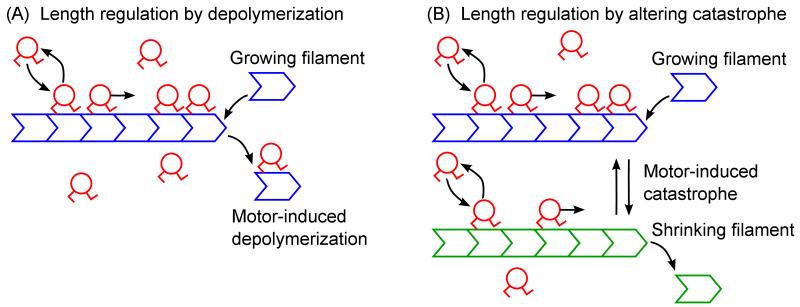Figure 1.
Schematic of the model. (A) Model of length regulation by depolymerization. Filament growth at the plus end is balanced by motor-induced depolymerization. Motors bind to and unbind from the filament, move toward the filament plus end, and catalyze removal of filament subunits from the plus end. This leads to a length-dependent depolymerization rate, so a single filament length is favored, depending on the model parameters. (B) Model of length regulation by altering catastrophe. The filament undergoes dynamic instability at its plus end, characterized by stochastic transitions between growing (blue) and shrinking (green) states. Motors bind to and unbind from the filament, move toward the filament plus end, and catalyze catastrophe (transition from the growing to the shrinking state) at the filament plus end. Motor effects make the catastrophe frequency length dependent, which leads to a broad distribution of filament lengths determined by the properties of the motors.

